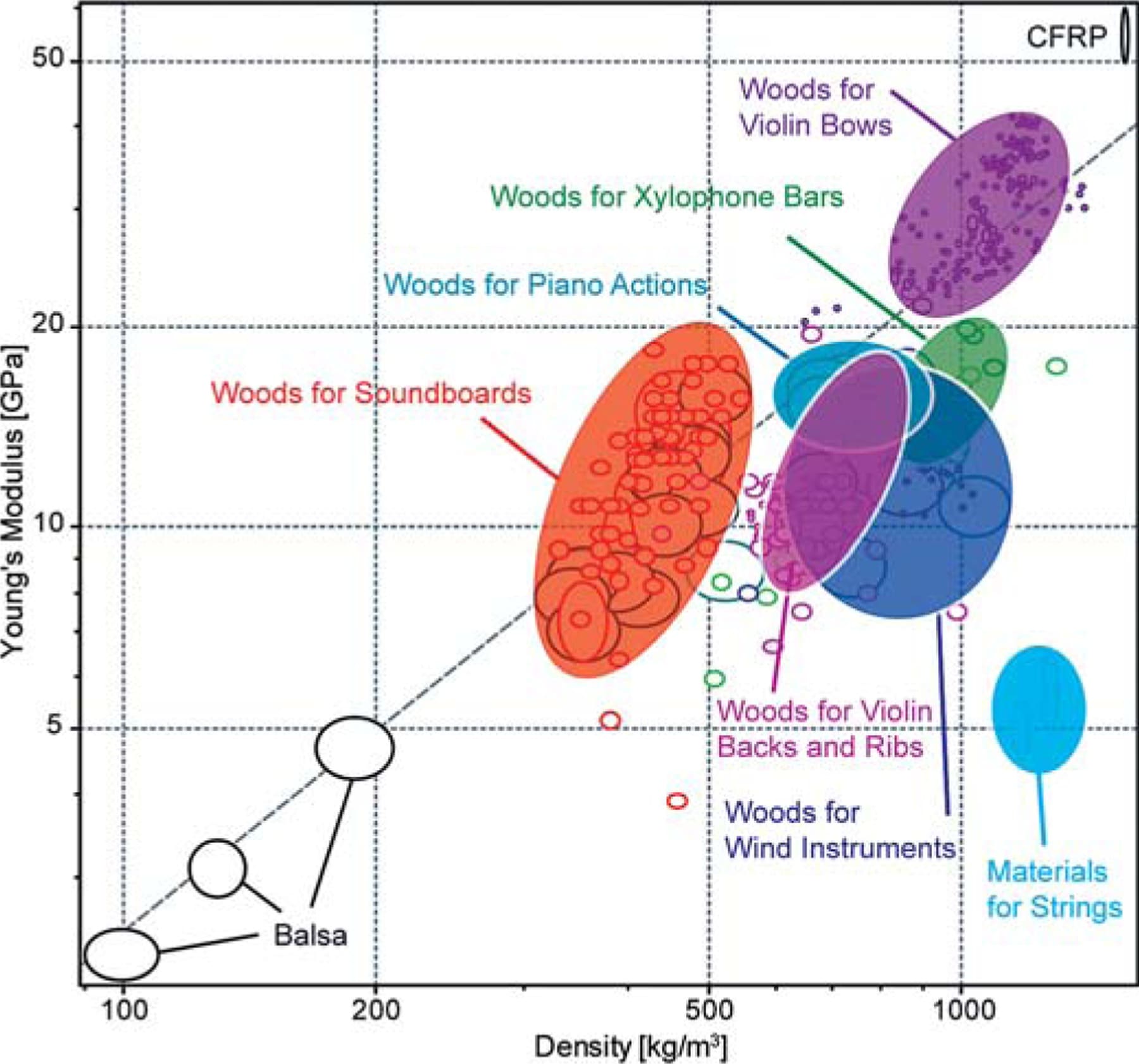Density and Stiffness make a good soundboard
A good tone wood is pretty hard to define. First it depends on the type of instrument you are making: stringed, percussion, or woodwind. Second there is so much subjective nature to the quality of sound that just can't be measured in a laboratory or by looking at charts and graphs of density and characteristic impedance. Acoustics is a fascinating science! When you marry this with the artistry of making music and the craftsmanship of making fine instruments, you are bound to get a lot of opinions.
If I can sum it all up with the short answer. A good tone wood has low density and high stiffness. There is enough air in the structure to vibrate, but it is stiff enough to hold its shape and ring. However this is only when we are talking about a soundboard for a stringed instrument. As you will hear, other types of instruments require a different mix of properties in their tone woods.
This episode tries to get at the root of what technical properties of wood make for good tone woods. I try to explain why wood remains the superior material for making music. In the end, I don't think I accomplish anything other than reinvigorating my love of music and science. Blending the two and throwing a wood shaving on top is my kind of party!

Low density and high stiffness makes a louder soundboard but woods for other instruments have different requirements.
Different Instruments require different tone woods
Why use Wood to Make Music?
The beauty of using wood for building instrument is the maddening variety of properties from one species to another and even within the same tree. All of that unpredictability is what makes for the richness of sound. Variety of the quality of the sound is what keeps guitar makers debating endlessly over the best Spruce to use for a soundboard and which species makes the best solid body guitar for blues music. It is this variety that makes an orchestra create a wall of sound that cannot be quantified and just brings tears to your eyes.


Very interesting episode. I really enjoyed it and thank you for all the research and detail. I enjoy all of your episodes, but this one was particularly interesting as I played clarinet and bassoon in high school band decades ago, and have been slowly learning guitar the last few years.
OMG, through back memories. I want to say like 25 years ago, I wanted to make boxes with with mechanical music movements. While I never got around to making it, I recall thinking at the time what would be the best wood and thickness. Now after this episode, I want to revisit this design idea.